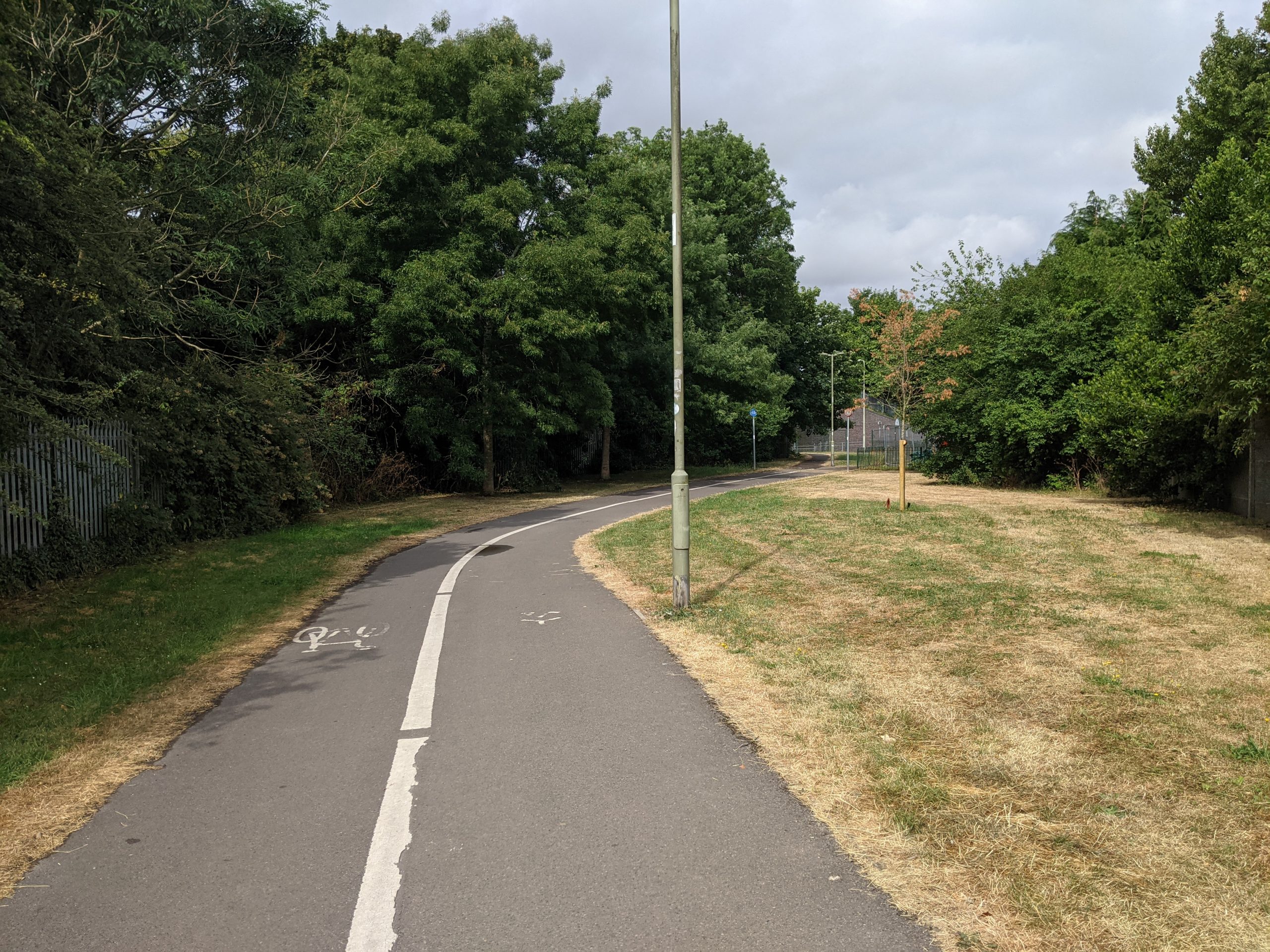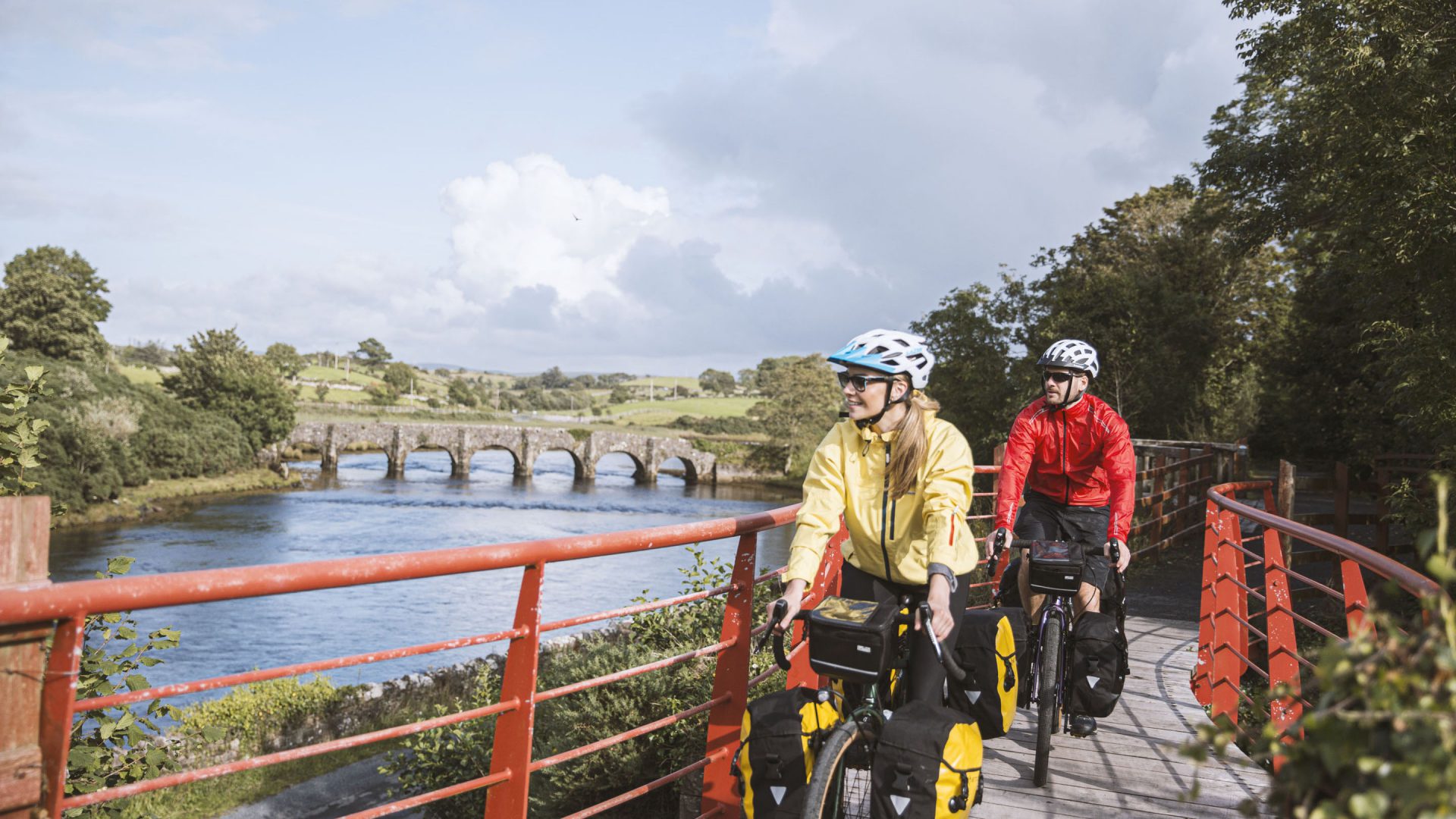Key Opportunity 5: Encouraging walking, cycling and wheeling in Cherwell
Existing cycle lane in Bicester

Purpose
Connect places for local people and visitors, encourage active travel and reduce air pollution by providing green routes to walk and cycle.
Description
Green walking and cycling routes should connect people to key destinations without a car along ‘greenways’.
This should encourage ‘modal shift’ toward more active modes, by creating pedestrian and cycle-friendly routes, both for recreation and short practical (A to B) trips around towns.
A greenway is a traffic-free route that is attractive, generally well separated from vehicles and continuous. It should look to use existing permissive routes where possible. For maximum connectivity, it should be planned strategically and ‘join the dots’ between key destinations, tourism and heritage assets.
Active, low traffic green routes through neighbourhoods and towns can also significantly improve areas of poor environmental air quality. As active travel infrastructure requires altering the layout of public space, this offers a valuable opportunity to take a GBI approach and integrate high-quality linear urban greening features (see Key Opportunity 3).
Re-shaping the environment in this way can encourage people to walk and cycle as part of their daily lives. This might be by “greening” the school run, making shopping trips easy by bike, e-bike or cargo bike, or providing opportunities for social encounters in streets.
The Oxfordshire Street Design Guide (2021) sets out guidance on how to rethink tarmac spaces and claim space back for local communities. This space can then be used to create green space, rain gardens, seating and growing areas or play areas.
Why is this important for Cherwell?
As highlighted in the People pages, there is a need for radically improved walking and cycling infrastructure in Cherwell to tackle existing car dependence and high car ownership. This will require better quality, better connected networks of routes for walking, cycling and wheeling – both for “A to B” journeys and for recreational trips and to access green spaces.
Given Cherwell’s ageing population, it is particularly important that routes provided are – wherever possible – accessible to a range of levels of mobility. This includes those using wheelchairs and people with disabilities. As disability affects all ages and socio-economic groups, it is essential to ensure movement corridors are safe and welcoming for all.
Case study: The Great Western Greenway (Ireland)
Great Western Way, Ireland (Image Source: GWW)

There are a number of well-established greenways in Ireland. They provide much needed cycling and walking infrastructure and draw tourists to the country. They include the Great Western Greenway, which is Ireland’s fastest growing and most sought-after tourism attraction.
In 2011, the first year after the project was completed, 146,000 trips were recorded on the route, rising to 260,000 in 2016. The greenway was later expanded in 2013 to Achill Island. This case study demonstrates the value of a long-term tourism and recreation strategy focussed on a network of connected greenways.
Further guidance
The creation and enhancement of walking and cycling routes (including riverside and canalside routes) can be carried out in stages:
- In the short term, enhancing wayfinding along the route would require lower levels of investment.
- In the medium term, access points can be improved (including to the river and canal), surfacing upgraded and ramps/stairs provided.
- In the longer term, cohesive planting and seating can be provided and the more structural improvements to footpaths provided – including widening, paving and inclusion of cycle infrastructure.
Overall, it is important that all walking and cycling routes are planned and delivered as a strategic, coherent network across the area in question, rather than ad-hoc. This is because the full value of walking and cycling networks lies in its networked quality and connectivity.
Key delivery partners
- Cherwell District Council – including Transport, Healthy Place Shaping and Regeneration teams
- Oxfordshire County Council
- Sustrans
- Town/parish councils
- Canal and River Trust
- Developers
Potential delivery mechanisms
- Grant funding (e.g. Lottery grants or UK government funding streams for active travel.)
- Designed into new development (see Guidance for new development).
- Developer contributions (e.g. Section 106) as a result of new development.
- Integration into high street regeneration programmes.